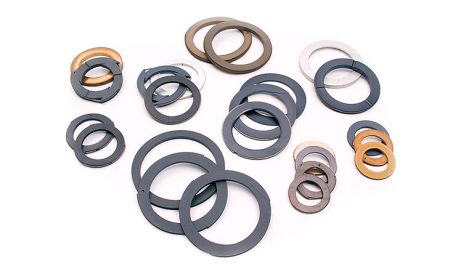Designing metal stamping dies or progressive die components is difficult, experience-based, and time-consuming task. Metal stamping dies design is a complicated and highly specialized process that typically consumes 20% of the lead time between concept design and final stamping manufacture.
Standard progressive die components
Most stamping dies are made up of several fundamental components like die plates, die sets, heel blocks, heel plates, screws, dowels, and keys. Stripper, pressure, and drawing pads are also required, as are the devices that secure them.
Plates for dies, shoes for dies, and die sets for dies.
Die plates, shoes, and die sets are all steel or aluminum plates sized to fit the die. They provide a solid foundation for mounting the die’s operating components. These components must be machined—milled or ground—to a critical tolerance for parallelism and flatness. Although grinding is the most common method, a milled surface as precise as a ground surface can now be obtained.
Bushings and Guide Pins
Guide pins, also known as guideposts or pillars, work with guide bushings to precisely align the upper and lower die shoes. They are precision-ground components that are frequently manufactured to an accuracy of 0.0001 inches. Various specialized mounting methods are available for these components. The two most popular types of guide pins are friction pins and ball-bearing-style pins.
Heel Plates and Blocks
Heel blocks are precision-machined steel blocks that are screwed, dowelled, and frequently welded to upper and lower die shoes. It has to wear plates to absorb side thrust due to a force generated during the cutting and forming processes. Heel plates and blocks are critical for applications where the force generated is unidirectional.
Stainless Steel Screws, Dowels, and Keys
Stainless Steel Screws securely fasten the operating components to the two die shoes. Socket head cap screw or Allen head screw is one of the most used screws to hold the various components together, owing to its exceptional holding power and strength.
Dowels locate the die section and components on the die shoe. These precision-ground, hardened pins have a considerable healing ability as well.
Pads
A pad is a flat or contoured pressure-loaded plate that holds, controls, or strips metal during the cutting and forming processes. Numerous types of pads are used in the manufacture of stamping dies.
Design considerations for progressive die components
For each of the following progressive die components, the dimensions play a crucial role in deciding the overall result.
- Die Block- Depends on the metal sheet thickness, strip width, and type of die material. The direction to which the sharp edges, if any, point, is also one of the deciding factors.
- Front spacer and back gage- Depends on the sheet thickness. The distance between the two is dependent on the stock strip width.
- Stripper plate- Depends on-die block size.
- Die gauges- Depends on the risk of camber during heat treatment in its manufacturing process.
Conclusion
Due to the variety of products produced by stamping dies, a high level of knowledge of the die designer is required, which can only be acquired through years of practical experience.
Checking the manufacturability of sheet metal components, developing strip layouts, selecting/designing die components, and die modeling are some of the major activities that die designers perform in the stamping industry.





